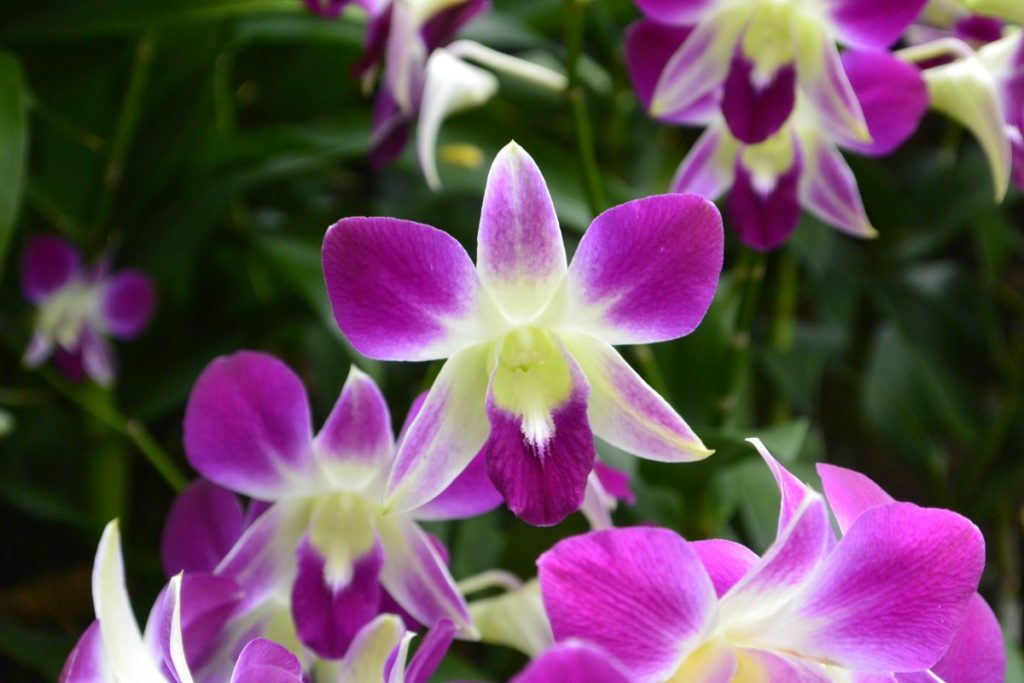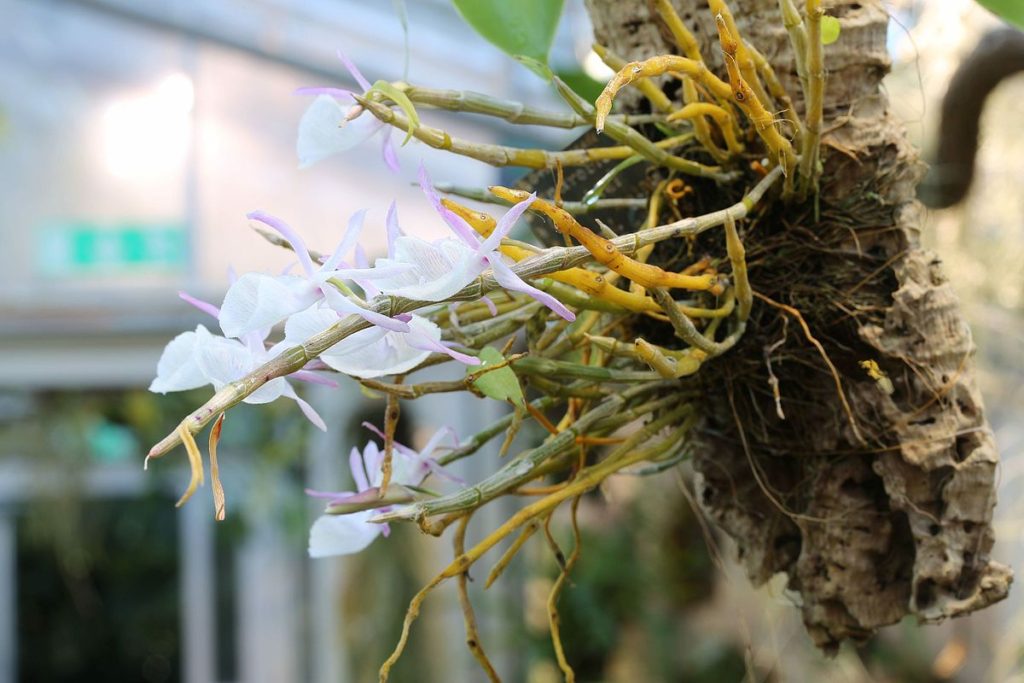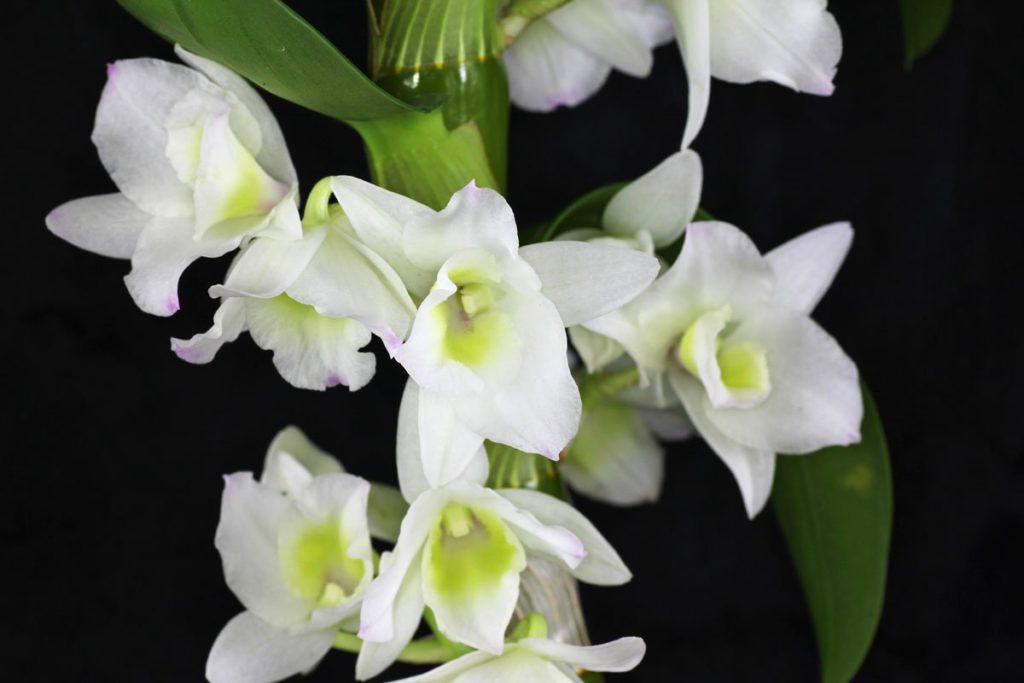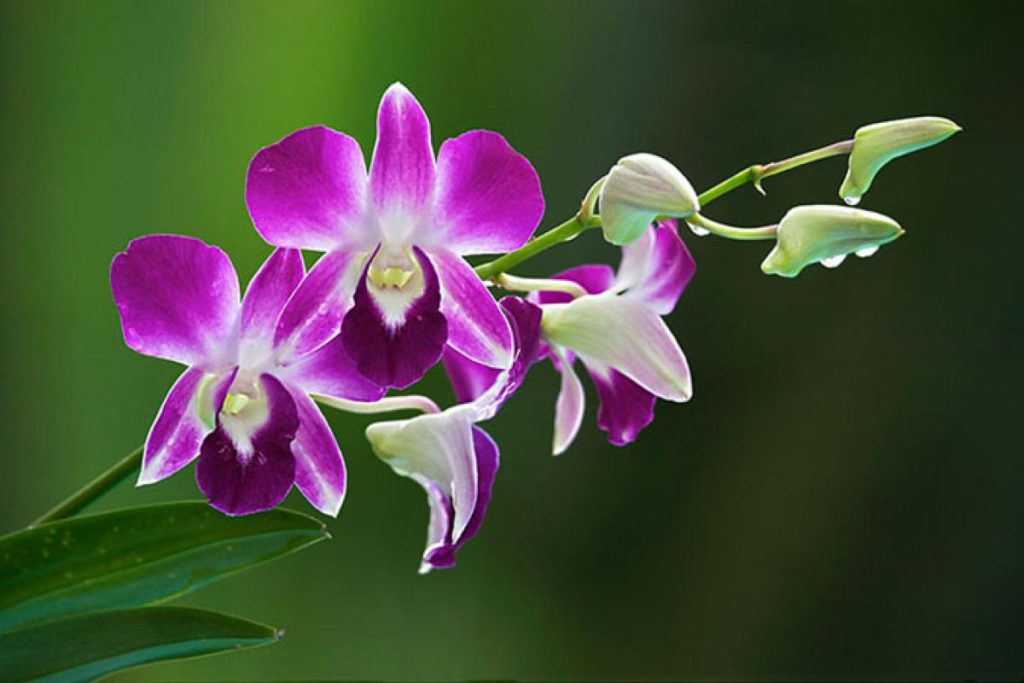The dendrobium genus has about 2,000 species. They are native to Southeast Asia and grow in a wide variety of climates, from hot and humid lower elevations to the highlands. Dendrobium belongs to the epiphytic plants.

They are all known for their lush color, and this article will look at how to make dendrobium orchid care by cultivating dendrobium orchid new shoots effortlessly.
What dendrobium orchid new shoots look like
The shoots are the forming tissue, and the roots serve to anchor and absorb. The orchid shoots can also serve as a support, lifting the stem or leaves. They are also the vegetative organ of the orchid plants, providing rapid vegetative growth.
The new growth of an orchid comes from a nodule. Depending on the type, the nodule may produce a root, a shoot, a leaf, or a flower. The flower stem grows from the base of the orchid and is bright green, almost lime green. They require a lot of light but not direct sunlight. You can also read how to properly care for orchids at home.

Why sometimes new shoots don’t grow on orchids
Dendrobiums have mixed buds, which means that they can grow in two ways: as non-flowering buds or, if the environment allows, as flowering buds.
If there are consistently high temperatures and humidity during the growing season (spring and summer), the mixed buds will turn into non-flowering or only partially flowering buds.
Dendrobium orchids are epiphytic plants, which means that in nature, they grow attached to other plants, rather than in soil. For this reason, you should ensure that your dendrobium nobile orchid is potted in a very well aerated and well-draining potting mix. Use a commercial orchid potting medium, which contains fir bark, peat moss or perlite. Or make your own.

Therefore, it is recommended to keep the night temperature at 64–68 °F or 18–20 °C during cultivation. This will promote the conversion of mixed buds into flowering buds, and therefore your orchid will produce new young shoots and also be able to pollinate.
Peculiarities of orchid blooms
Most dendrobium orchids are characterized by long blooms (approximately 6-8 weeks) and after that, you will get magnificent flowers. Dendrobiums usually bloom in spring or summer, but they can even bloom several times a year.
If you have problems with orchid blooms, take care of the optimum amount of light and water. Sometimes fertilization may be necessary, but not often.

An orchid can bloom again on the same stem, but some effort will be required. For 3 to 4 weeks, you’ll need to keep the temperature at 55 °F or 12 °C С and reduce the water intake of the plant to a minimum. Direct sunlight almost always harms the plant too. This is not true for all dendrobium orchids, so certain knowledge is required for each species.
Planting dendrobium plants
You do not need a large pot to grow a dendrobium, as it will not give a strong root system that takes up a lot of space. If the pot is too large, water accumulates in the soil and root rot occurs. The height of the pot should be 2.5 cm higher than the dendrobium bulb.

You can easily buy a dendrobium at your local garden store and simply place it in a breathable, well-drained substrate. It’s recommended to use upright sticks to support the flowering branches after planting. In warmer, more humid climates, you can cover the dendrobium root with sphagnum moss and secure it to the tree with rope.
The secret of perfect watering for a dendrobium orchid
Watering plants is one of the most difficult things to do, as it is difficult to calculate how much water they need, and sometimes it is hard to be sure if you have poured too much or too little water.

This plant is very demanding when it comes to humidity. It likes to keep its leaves moist, so it’s a good idea to sprinkle it frequently.
In the case of the dendrobium orchid, you should know that it does not need a lot of watering. An abundant watering a week is enough, make sure that the substrate does not dry out between waterings. Remember that too much water does more harm to the plant than a little drought. If you see that the leaves are yellowing, then you are watering too much.
How to fertilize orchids for better growth
Do you want your dendrobium orchids to grow strong and healthy and have fragrant flowers? Fertilize them according to the right recommendations, and you will get there. Sometimes orchids may need fertilizer if they don’t have the right orchid potting medium.

Read also: Healthy orchid roots
If you feed them with the right orchid fertilizer every three weeks during the growing months (spring and summer), you will achieve unmatched blooms. In the fall and winter, you can fertilize every five weeks. With this fertilizing frequency, providing the necessary potting medium, these plants will be stronger and bloom more and better. You can also learn more about how to hang orchids comfortable and beautiful.
Propagating dendrobium orchids by splitting
It is best to use a dendrobium orchids with a large number of shoots to divide it. This should be done after flowering. When dividing the plant, carefully remove it with its roots intact and cut it into several groups from the base. It has to remember that using clean tools and disinfect the wounds with fungicide are required. Then plant the separated clusters in containers and store them in a cool place. While the new roots are growing, spray them with plenty of water to prevent them from drying out.
Propagating dendrobium orchids by cuttings
You should select healthy, thick shoots, remove the leaves and cut them into small 2-knot pieces. Insert the lower part directly into the substrate. Keep the substrate moist and in about 2-3 months they will take root and germinate.
It can also be propagated by cuttings by placing the entire stem on the damp substrate and cutting it into pieces after it has rooted and sprouted.
The rooted cuttings should then be transplanted into pots for further growth. The third method of propagation by cuttings is possible during hot weather, when the stems develop roots and can be cut and planted from the mother plant.

The problem of yellow leaves on dendrobium orchids
It is normal for leaves to turn yellow and fall off in autumn and winter. If it happens during the other seasons, it can be caused by the following reasons:
- Insufficient sunlight. The dendrobium orchids needs long periods of light and if it does not get enough light, its leaves will turn yellow and fall off.
- Improper watering. Overwatering can cause root rot and underwatering can cause dehydration of the plant, which will cause the leaves to turn yellow and fall off.
- Pests and diseases. This symptom can be caused by infestation with certain pests and diseases. Check the plant for other symptoms and treat it with the necessary pest control products.
If you grow dendrobium orchids, remember to follow these simple tips to prevent trouble with your flower.

What diseases and pests the orchid suffers from
The insects that most often affect this type of orchid are aphids and mealybugs. In the case of aphids, check the flower buds, leaves, and new shoots, on which black spots sometimes appear. As for mealybugs, they also cause dark spots to appear, especially on the underside of the leaves.
As soon as you detect the presence of any of these pests, you should treat the plant with the appropriate insecticides. Another thing is diseases that dendrobium can suffer from. These include fungal diseases such as Botrytis and black rot. Combine them with a special fungicide, taking care not to apply it to the leaves.

Conclusion: dendrobium is one of the beautiful orchids of its genus
In general, it can be said that dendrobium is capable of exuberant growth and lush flowering. It is also variable in propagation and can give a sprig to a new plant through a shoot. With such delicacy and beauty, this flower deservedly holds a special place among orchid lovers.
Read also:
What are the shoots that come out of an orchid?
The shoots that come out of an orchid are called new growth or new shoots. They are the plant’s way of growing and producing new leaves and eventually new flowers. The new growth appears from the base of the orchid, and it can be a sign of a healthy and actively growing plant. However, it is important to monitor the new growth and provide proper care, including adequate light, water, and fertilizer, to ensure that the orchid continues to grow and flourish.
What does a Dendrobium keiki look like?
A Dendrobium keiki is a new growth or shoot that appears on a Dendrobium orchid. It looks like a miniature version of the parent plant and can grow into a new, separate plant over time. A Dendrobium keiki typically appears as a small, rounded growth at the base of the orchid, near the roots. It may have a few leaves, and in time, it may develop roots of its own.
Should I cut Dendrobium stem?
It depends on the stem’s condition. If the stem is yellow/brown and not producing growth, cut it back at a node. If the stem is green and producing growth, you may not need to cut it back.
Do Dendrobium orchids Rebloom on the same stem?
Yes, Dendrobium orchids can rebloom on the same stem, but it depends on the specific conditions and care of the plant. Dendrobium orchids are known for their long-lasting blooms, and they may produce several spikes or stems that bloom successively over the course of several months.
